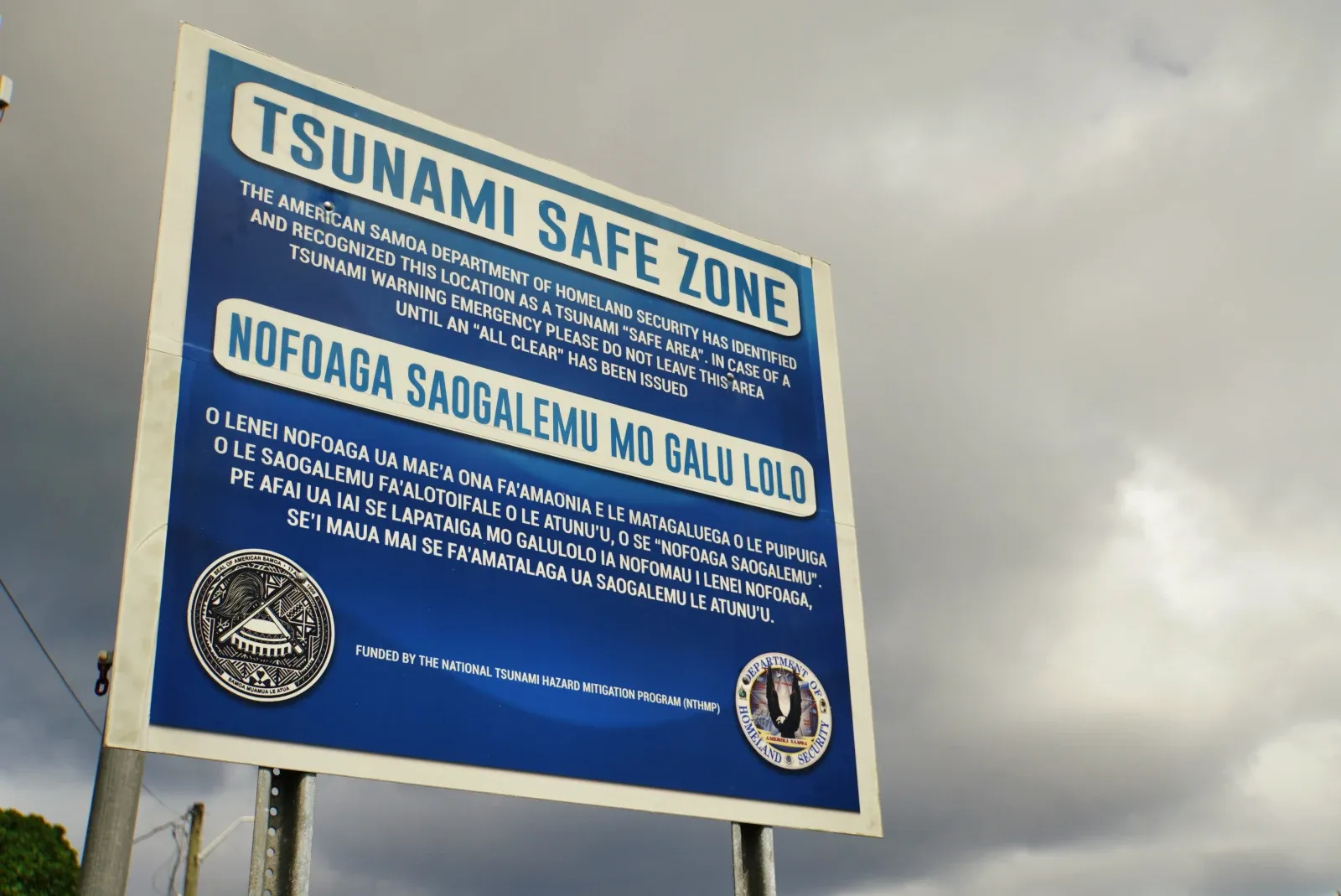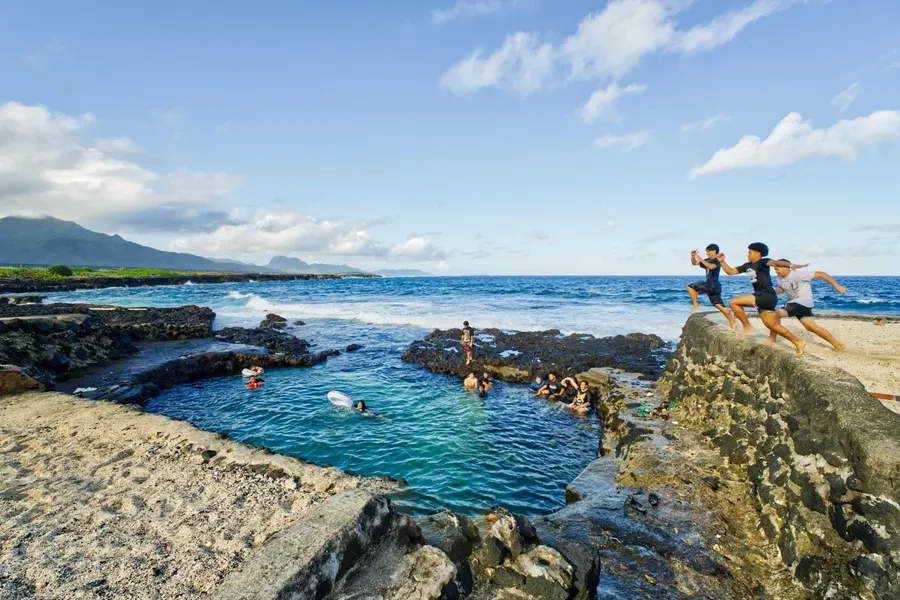A Traveller’s Guide to Earthquakes and Tsunamis in American Samoa
American Samoa lies within the Pacific Ring of Fire, one of the most seismically active regions on Earth. The territory faces natural hazards including earthquakes, tsunamis and tropical cyclones (hurricanes).
The most significant recent event was the 2009 earthquake and tsunami, which caused widespread damage and loss of life across Tutuila and neighbouring islands.
While these events are rare, travellers should stay informed and prepared. Visiting American Samoa remains safe, with well-developed disaster response systems, including tsunami bulletins, evacuation routes and community preparedness programmes.
This guide offers essential tips for staying safe during earthquakes or tsunamis whilst exploring the islands.
For advice on weather-related risks, see our guide: Cyclone Safety in American Samoa. You can also check out Is It Safe to Travel to American Samoa? for more general safety tips.
Table of Contents
5 Facts About Earthquakes, Tsunamis and Volcanic Activity in American Samoa
- American Samoa is located just north of the Tonga Trench, one of the most seismically active zones in the Pacific.
- Most earthquakes that impact the territory originate offshore, increasing the potential risk of tsunamis over direct ground shaking.
- On 29 September 2009, an undersea earthquake triggered a tsunami that caused significant damage and loss of life across Tutuila and the Manu‘a Islands.
- Unlike neighbouring Samoa, American Samoa does not have recent volcanic eruptions, but nearby underwater volcanic activity has been recorded.
- The islands are built on extinct volcanoes, and while they are not considered active, seismic monitoring continues due to regional tectonic activity.
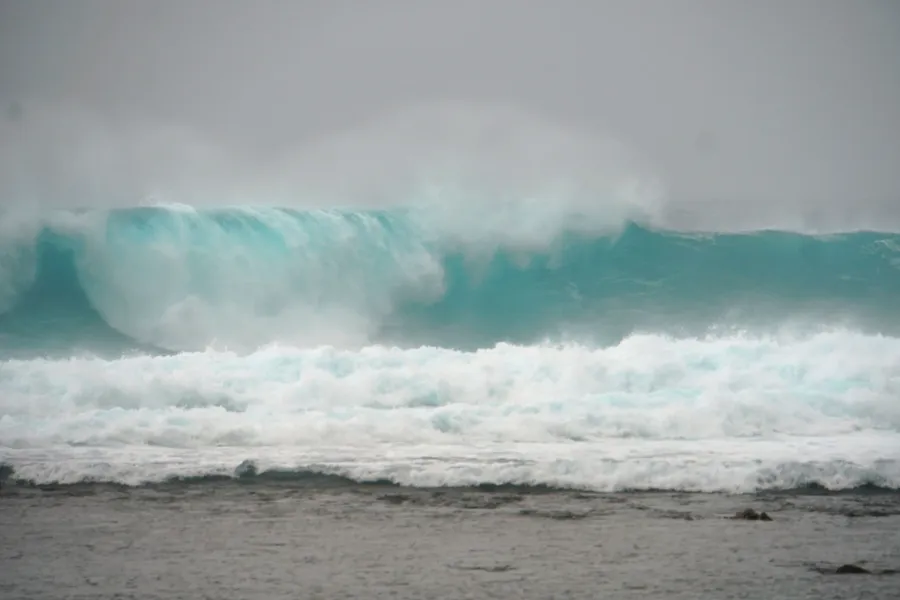
Earthquakes in American Samoa
American Samoa is situated within the Pacific Ring of Fire and lies just northwest of the Tonga Trench, making it vulnerable to seismic activity. According to ThinkHazard.org, there is a moderate risk, with about a 10% chance of a potentially damaging earthquake occurring in the next 50 years.
Most earthquakes that affect American Samoa happen offshore, beneath the ocean floor. Because of this, tsunamis pose a greater threat to the islands than ground shaking alone.
%20CREDIT%20AmericanSamoaPocketGuide.com-900x600.webp?v=2025-08-25T03%3A03%3A34.250Z)
Tsunamis in American Samoa
Tsunamis are the most serious natural hazard in American Samoa, typically triggered by offshore earthquakes, though undersea landslides and volcanic activity can also cause them.
Since the 1800s, American Samoa has experienced multiple tsunamis, but the most devastating occurred on 29 September 2009. A magnitude 8.0 earthquake struck at 6:48 am, about 193 km (120 mi) southwest of Pago Pago.
Just minutes later, waves reaching up to 15 m (50 ft) hit parts of Tutuila and the Manu'a Islands, resulting in 32 deaths in American Samoa and causing widespread destruction. The 2009 tsunami remains the most catastrophic in the territory's history.
How to Prepare for a Tsunami in American Samoa
American Samoa has an established tsunami warning system, including bilingual radio broadcasts and alerts from the American Samoa Department of Homeland Security. Still, travellers should take extra steps:
- Sign up for alerts from NOAA or the Pacific Tsunami Warning Center
- Be aware of tsunami evacuation maps for where you’re staying and take note of tsunami evacuation signs found in most villages
- Listen out for tsunami warnings emitted through radio, TV, and online on news websites.
What to Do if a Tsunami Warning is Issued
Tsunami warnings can be issued through news media in the South Pacific. Other signs of a tsunami could be a strong earthquake, seeing the ocean recede and/or hearing unusual roaring sounds from the ocean. If any of these signs occur, follow the steps:
- If you see signs of a tsunami before a tsunami warning is issued, act immediately
- If you’re on the coast, move inland and to higher ground immediately
- Head to areas as advised on tsunami evacuation maps and or follow tsunami evacuation signage.
After a tsunami, continue listening to the media for announcements. Only move back into the affected areas when authorities have said it is safe to do so.
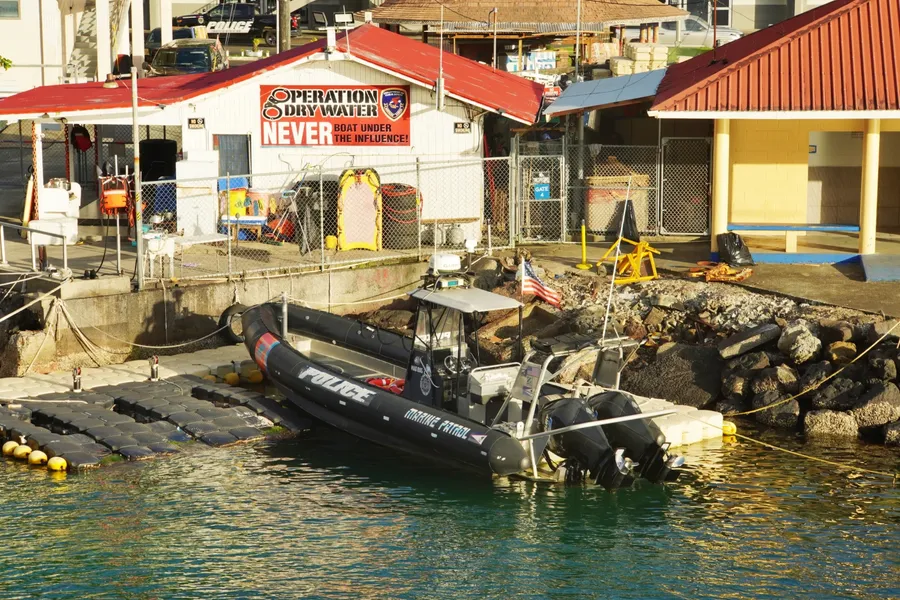
Frequently Asked Questions About Earthquakes, Tsunamis and Natural Disasters in American Samoa
Now that you know about natural disasters in American Samoa, here are the answers to the internet's frequently asked questions about earthquakes, tsunamis and natural disasters in American Samoa!
Has American Samoa ever been hit by a tsunami?
Yes, American Samoa was devastated by a major tsunami on 29th September 2009, which was triggered by an 8.0 magnitude earthquake in the nearby Tonga Trench. The tsunami caused significant damage and loss of life across the islands.
What natural disasters are common in American Samoa?
The most common natural disasters in American Samoa include earthquakes, tsunamis, tropical cyclones and flash flooding. The territory's location in the Pacific makes it vulnerable to these weather-related and geological events.
Is there a tsunami warning system in American Samoa?
Yes, American Samoa has a comprehensive tsunami warning system that includes emergency broadcasts and mobile alerts. The Pacific Tsunami Warning Centre monitors seismic activity and issues warnings when necessary.
When is cyclone season in American Samoa?
Cyclone season in American Samoa typically runs from November to April, with peak activity occurring between December and March. During this period, the island is at higher risk of tropical storms and cyclones. For more information, check out American Samoa Weather, Seasons & Climate + Weather by Month.
What should I do if there's an earthquake in American Samoa?
If you experience an earthquake in American Samoa, immediately drop to your hands and knees, take cover under a sturdy desk or table, and hold on until the shaking stops. If you're near the coast, move to higher ground immediately after the shaking ends due to tsunami risk.
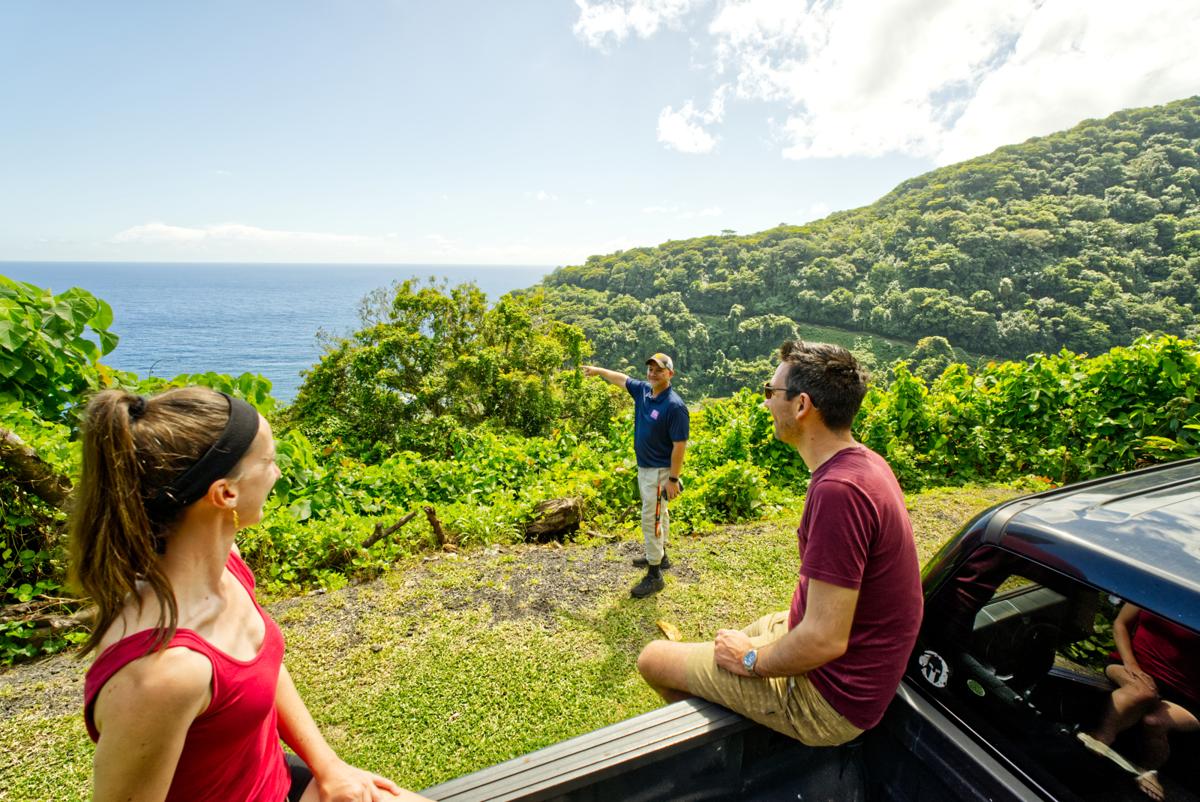
Editor's Choice
Best Tours
Embark on an unforgettable journey to the westernmost point on Earth before crossing the International Dateline! Our Where the Day Ends Tour combines American Samoa's rich cultural heritage with...
More About Earthquakes and Tsunamis in American Samoa
That's it for our guide to earthquakes and tsunamis in American Samoa. For more about natural disasters and safety tips, head to the following articles:
- Cyclones in American Samoa: A Guide to Cyclone Safety in American Samoa
- American Samoa Safety Tips: Is it Safe to Travel to American Samoa?
- Is the Water Safe to Drink in American Samoa?
For more tips for travelling in American Samoa, head to our 30 Tips for Travelling in American Samoa.


